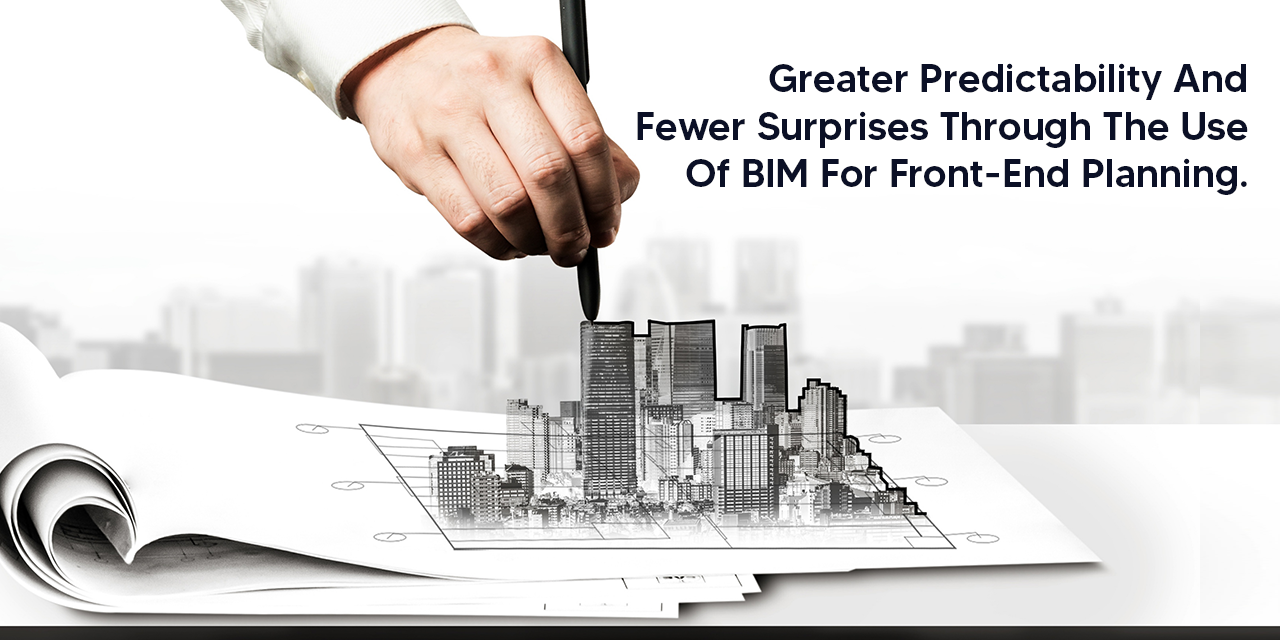More Predictability And Less Surprises with BIM in Planning
Striving for excellence used to be a sleight of hands but in today’s hyper-competitive and Digital world on-demand solutions that are powered by – Software, Automation, and Analytics are gaining traction by the day. Once used primarily within traditional design-phase boundaries, BIM can now be used during front-end planning. Programs have been developed that allow for quick conceptual model development, or “macro” modeling. These programs focus on construction site requirements and large-scale building massing.
Front-end planning
Extensive research by the Construction Industry Institute confirmed that Front End Planning plays an important role in improving project performance. There are many approaches to enhance it but going with a tool that offers strategic planning and is also a performance aligner then BIM tops among all the options.
Research indicates that good front-end planning results in the achievement of higher levels of project performance. By facilitating collaboration among stakeholders in diverse locations with the use of workflow-enabled processes, such pressures can be reduced, and the overall process and results can be improved.
Economic development officers can also derive value from BIM by providing virtual spec industrial spaces for their communities. 3D models provide something to show to site consultants, prospects, management, and community members, at a fraction of the cost of a speculative industrial facility. Macro-BIM software not only provides a virtual spec building but also a preliminary schedule and cost, taking participants’ understanding beyond 3D and into 4D analysis.
Leveraging BIM for Front End Planning :
- Reduces construction costs.
- Feasibility analysis.
- Efficient capital allocation.
- An escape from a traditional methodology.
CONCLUSION:
It’s obvious that improving decision-making at the project outset is advantageous. But macro-BIM models created during preconstruction can be built upon and utilized as a basis of design during subsequent phases of project development, thus benefiting the design, procurement, and construction processes.
The use of macro-BIM during preconstruction also leads to lower risk and improved predictability during the construction phase. Project risk takes many forms, including the loss of profit due to cost or schedule overruns or excessive changes. If project variables have been controlled and modeled before construction commences, this reduces the number of things that can go wrong once work is underway.
Macro-BIM solutions take a holistic view of a project. Having a preliminary design that is fully represented in 3D form gives shape to a project, improves collaboration and understandings, allows cost and feasibility to be established within hours, and, most importantly, improves project success.
Therefore, by working with design-build firms or consultants who have leading interactive BIM software — and who have customized its pre-set formulas and data sets (especially historical cost data) with information that is closely tailored to specific project situations — owners can reduce risk and improve on predictability on projects, hence leading to greater predictability and use of BIM for front end planning.

